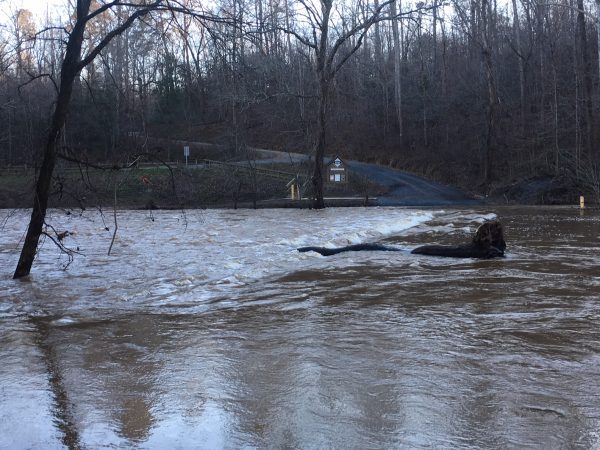The delusions of a gardener

For vegetable gardeners in the Piedmont, 2018 was a challenging year. The weather whipsawed between mundane and extreme.
January started with a blast of bitter cold. Temperatures dipped into the single digits, something we don’t experience every winter. I was so intimidated by the forecast, I didn’t even bother to cover my tiny front-yard food plot. Normally cold-hardy vegetables such as arugula, celery and Swiss chard got hammered. I actually enjoy a good dose of winter – which seems increasingly rare these days – so I took the loss in stride.
By early February, I was itching to sow my English peas. In the Uwharries we typically wait until the end of the month, so I always feel a bit reckless planting them so early. I know my urban neighborhood is a heat island, but every year, I hold my breath. So far, I haven’t lost a crop. The vines produced like mad for a couple weeks, but April’s heat soon took its toll.
I was philosophical about ripping them out – it freed up space to sow green beans. I expect to coddle my seeds and seedlings with supplemental water, but once the plants get established, I like to cut back to no more than once a week. Not last year. It got so hot and dry in June, it felt like I was keeping those beans on life support. Every afternoon, I’d check the radar. Thunderstorms popped up all around the city. All of them missed me. Bands of rain dissipated before they reached my yard.
The plants were vigorous and full of blooms. I wanted a return on my investment, so I kept watering. I eventually got a whopping water bill. I had to scale back. Fortunately, we had a nice thunderstorm in early July. It was their salvation. Nothing makes plants happier than unadulterated rain falling from the sky. I was convinced the weather pattern had broken.
Oh, the delusions of a gardener! That storm proved to be a fluke. My garden didn’t receive another measurable rain until mid-August. The tomatoes and peppers took it in stride, but the green beans didn’t last. The cucumbers were pathetic – pinched on one end by drought then bulging on the other after my dousings.
By the time I replaced the green beans with a row of burgundy okra, I was keeping my expectations in check. I didn’t care if I harvested any pods. All I asked was that the colorful stalks make the garden less of an eyesore until I could start afresh in the fall. My hopes were pinned on September, on the solstice, when the sun loses its ferocity and temperatures moderate, when it becomes feasible to water again even if the weather stays dry, as it often does in fall.
This fantasy was not to be. September 2018 was the hottest on record in 60 US cities, including Charlotte. I waited and waited to sow my salad greens, worried they’d bolt. This concern inadvertently spared them from the deluge of Hurricane Florence, which brought eight inches of rain to my garden and almost twice as much to the Uwharries.
Weeks later, Hurricane Michael dumped another four inches. I finally sowed my greens in mid-October. The lettuce never came up. The only bright spot was the stalwart arugula which even survived the snow, sleet and freezing rain in early December. I certainly didn’t have to water it. Charlotte received more than twice the normal rainfall in December. Many places around the state — including the Uwharries — saw record-breaking precipitation in 2018. According to WBTV meteorologist Al Conklin, it was the eighth wettest year in Charlotte.
Alas, 2019 is off to a rainy start. Compared with other soils, clay can hold a lot of water, but it’s already beyond capacity. The ground is completely saturated. When Dad says it’s rotten, I consider it a technical definition and not just the opinion of a former farmer. I’m lucky to have a semi-raised bed with friable dirt, thanks to copious amounts of compost and manure. Anyone who wants to garden in the native red clay of the Uwharries has to wonder if it will be workable by spring.
I imagine the stress this would cause subsistence farmers like my ancestors or the millions of people around the world who still depend entirely on what they manage to grow. If my vegetables fail, I have the luxury of buying replacements at a grocery store. At least for now. On some level, everything we eat is at the mercy of the weather. Gardening in 2018 reminded me that a changing climate will bring even more insecurity to our food production.